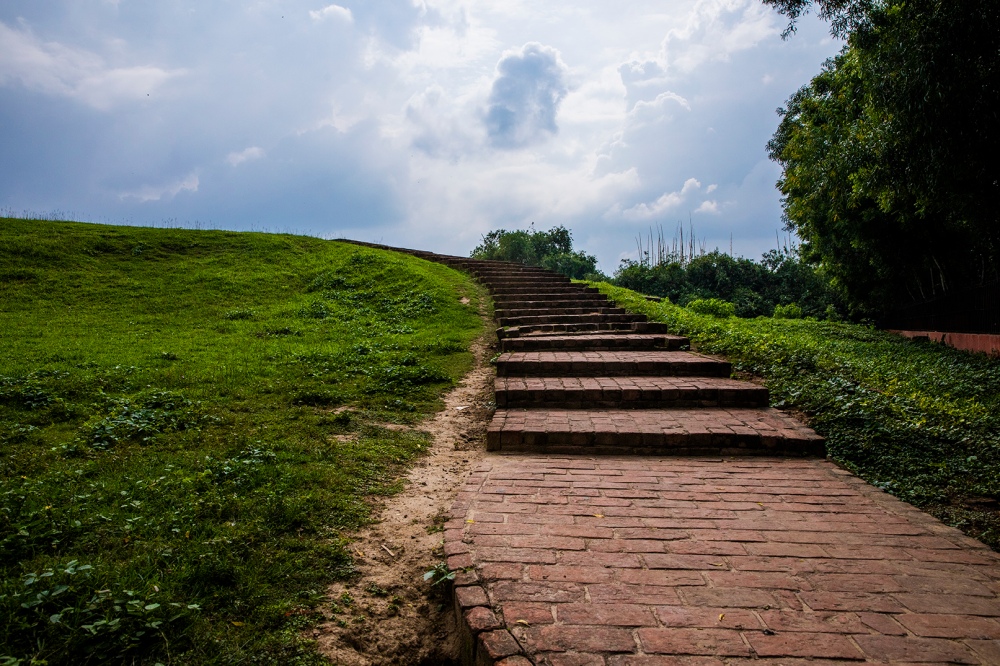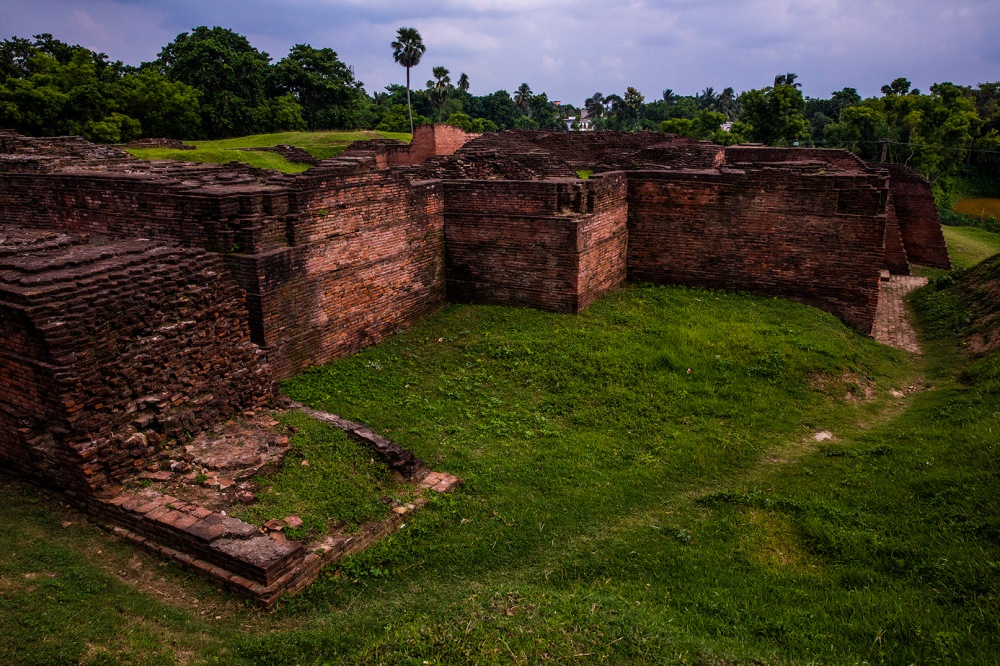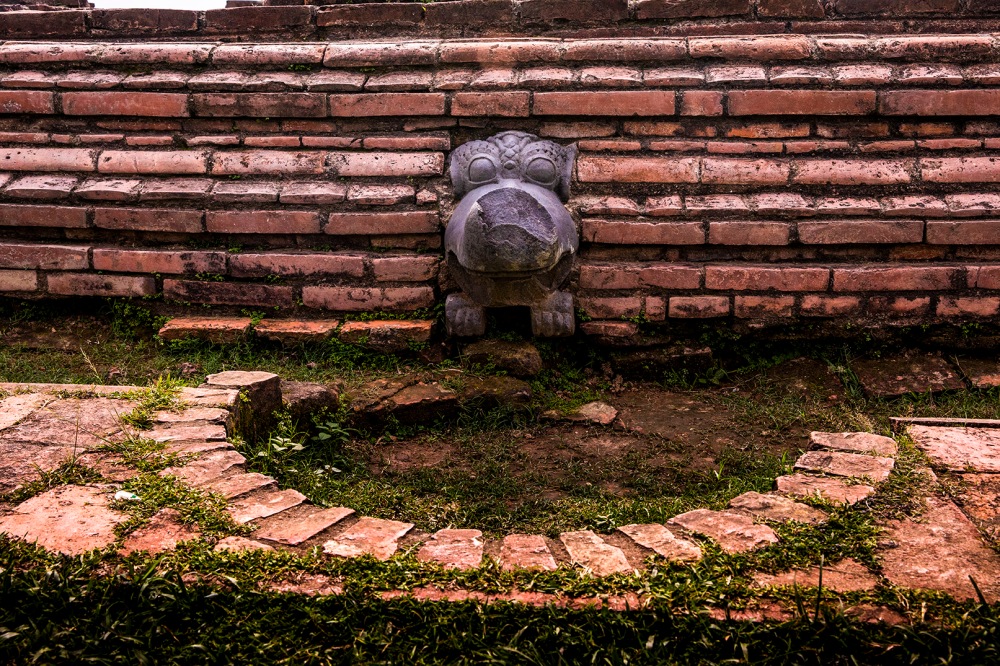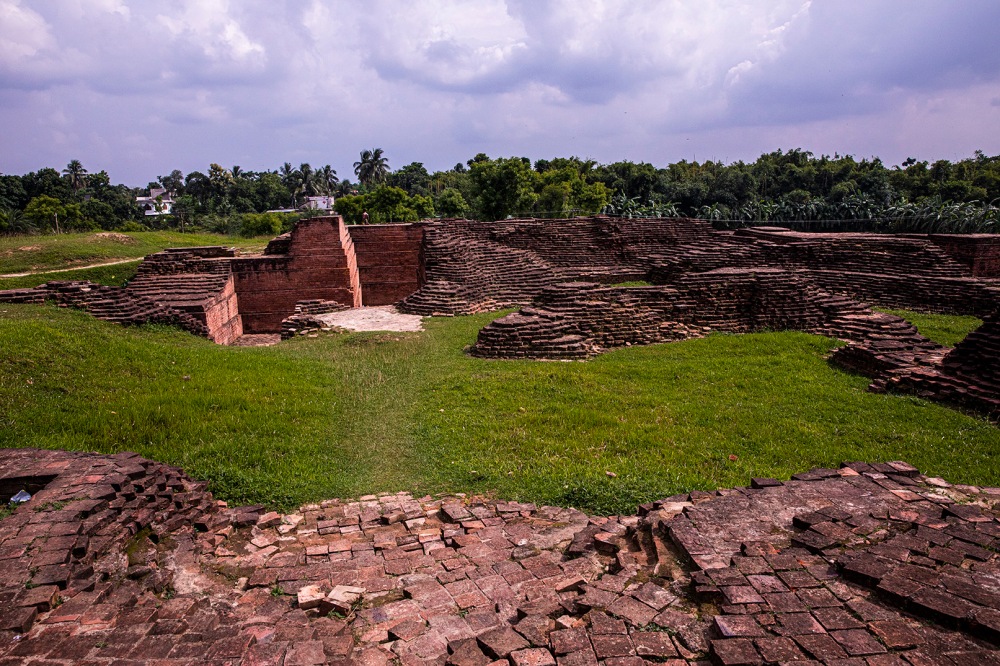“Sir, I read about Ballal Sena during school life but I’m not sure where it is.” said the toto-puller, “Could you please tell me the location”.

I had just arrived in Krishnanagar Station. My first target was to visit Ballal Dhipi or the Mound of the King Ballal Sen. Opting for a bus could have been a cheaper and easier travel option but I would like to feel the area and moreover it was monsoon with rain forecast. Thus, I decided to hire a toto, a three-wheeler semi open vehicle pulled by an engine. I started bargaining. One said, it would take 500 bucks. It sounded overpriced to me. I started bargaining with others. Some of them were unaware about the distance and told me the fare of visiting Mayapur. Some of them got afraid of wasting time. Basically, they had the opportunity to earn more on their own route. Finally, I got one toto-puller who asked me the above-mentioned question.
“Here it is.” I opened Google Maps and showed him, “It is near Bamanpukur, after Shondanga.”
“Sir, I have never visited there. But I can drop you there. Please guide me. One side is 250 bucks. Because I won’t get any passenger during my return.”
“Okay, you will drop me there, wait for one hour and take me back. I will give you four hundred. Anyway, you will get no passengers while return. Moreover, once you know the place, you can take the tourists later.” I bargained and he agreed to go.

We started our trip. Raju, the toto-puller is a young, dynamic guy. He asked me, “Sir, Is Ballal Dhipi related to Ballal Sena? If you can talk about the brief history, then I can guide the visitors from the next time.”
“Yes”, I replied, “It is believed that Ballal Sena, the most famous ruler of the Sena Dynasty built his palace on the eastern bank of the river Bhagirathi. Senas came from Karnataka. In 1070 AD Samanta Sena founded the Sena Dynasty. Initially, the capital of the Sena Dynasty was in Simulia. After 89 years, in 1159, his great-grandson Ballal Sena, the most popular in the family, sat on the throne. He founded a gigantic palace on the eastern bank of the river Bhagirathi over a structure dating back to the 8th-9th Century. Long after his death, the palace got ruined by the erosion of the river. Today’s Ballal Dhipi is the architectural remains of the gigantic architecture.”
The toto was running on the NH 12 through the beautiful landscape of Nadia district.

This is probably the most unique part of the Bengal Delta. The Tropic of Cancer passes through here. Thus, the climate is always extreme here.

From Chaugacha-Hansdanga crossing, we left the National Highway and proceeded towards Bhaktisiddhanta Saraswati Marg.
“One thing I cannot understand. The structure is ruined, even, you are mentioning it as a mound. Then why are you travelling there?” Raju sounded very anxious.
“That’s a good question”, I replied, “digging down a portion of the mound, some architectural remains were found. I would like to see them.”
“Who dug the mound?”
“In 1980, the Archaeological Survey of India planned to dig the mound. The work was carried out in two phases – in 1982-83 and 1988-89. The excavation revealed the gigantic structure. But due to the nature of the soil of the area, further digging might cause harm to the structure. So ASI stopped the project. Instead, they maintain the site with the status of national importance. But the historians are sure that the excavated structure was built over an earlier structure.”
We reached Shondanga. From there we took a right turn and went inside Bamunpara. Further moving through the narrow by lanes, we reached Ballal Dhipi.
ASI protected the area with a boundary. A 30 feet mound spread over 1300 square feet for centuries. Surprisingly, no entry fee was required. We went inside. A newly constructed staircase led us to the top of the mound.


The structure was built on brick and terracotta. The stair merges to a brick path. Following the path, we went inside. It is a narrow passage flanked by a brick wall. In the passageway, the bricks are diagonally arranged.

Walking along the passage way, we reached the backside of the structure. The structure looked gigantic from the backside. There were other mounds yet to be dug.

The site is remarkably well preserved. Kudos to ASI!
“Sir, have you seen the face of a crocodile?” Raju asked me.
“Where is it?” I asked quizzically. He directed me. A stone made sculpture of crocodile, the second avatar of Lord Vishnu, was there. Unfortunately, all of the stucco work taken to the Krishnanagar Zamindar family and the rest were taken to the Ashutosh Museum of the University of Calcutta.

It was quite evident; the building was well planned. According to ‘Bangalir Itihas’ by Niharranjan Roy, Samanta Sena, the founder of Sena dynasty, shifted to a palace on the bank of the river Bhagirathi. The palace was inside a forest. This could have been the same palace. The erosion of the river made a change in the flow. The forest Bethuadahari is near Ballal Dhipi.

We were coming back from Ballal Dhipi. Raju asked me, “Sir, was this palace the capital of the Sena’s?”
“Most probably no.” Their capital was in Simulia which is near to this place. But it was destroyed and now is under the river. But Ballal Sena died in this palace.”
“Did his son stay in this palace?”
“No, he converted this palace as an army base.”

While coming back, I noticed, few of the homes in Bamunpara have mounds and few of them have used the same bricks in their home. I was interested to talk to the landlords. But Raju discouraged me. “Sir, getting curious about them can lead to danger. The villagers have their own beliefs and sentiments. Let’s not ask them.”
I obeyed him. Let’s leave the questions on time.
References:
- Nadia Jelar Purakirti by Mohit Roy, published by State Archaeology Department, Government of West Bengal
- Bangalir Itihas Adi Porbo by Niharranjan Ray published by Dey’s Publishers
- Blog post of Mr. Rangan Datta : https://rangandatta.wordpress.com/2012/03/07/ballal-dhipi-mound-of-ballal-sen/
- Map Courtsey: Google Map

[…] Read More […]
LikeLike